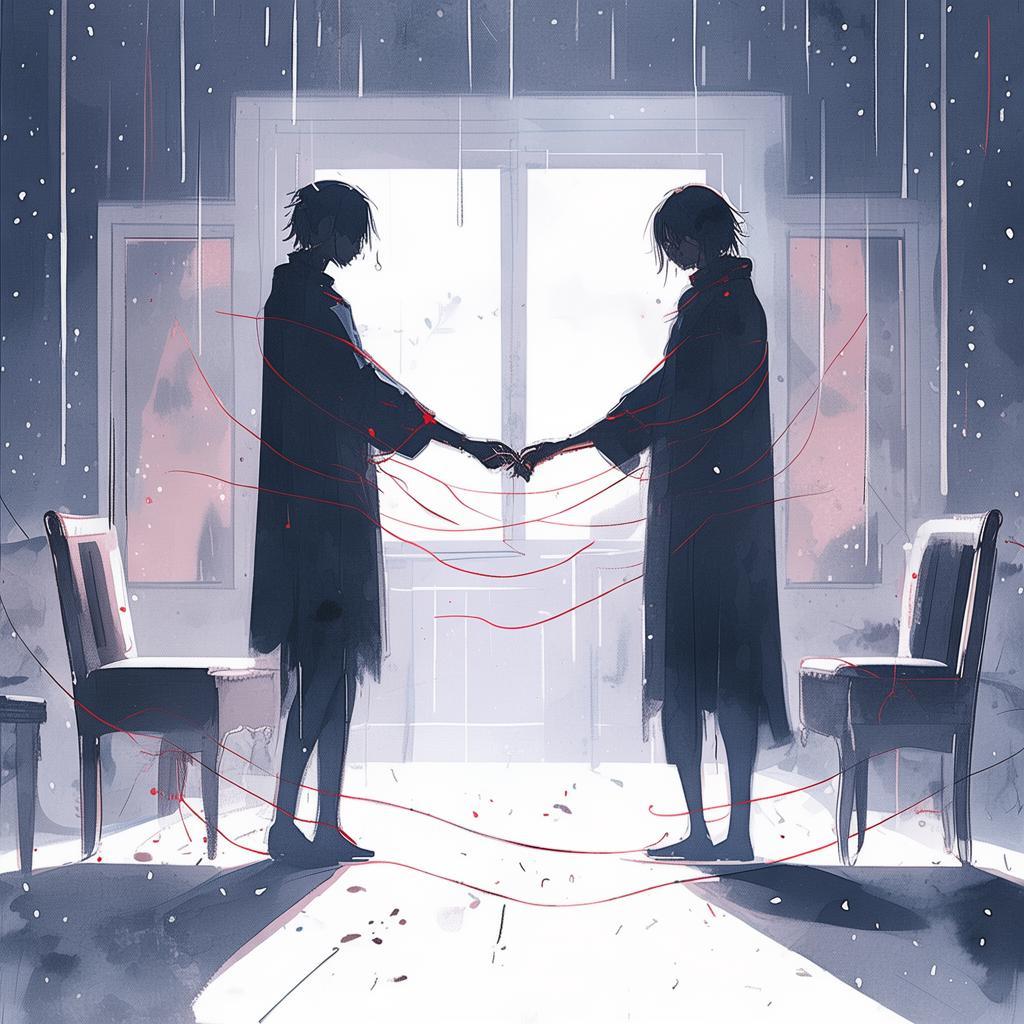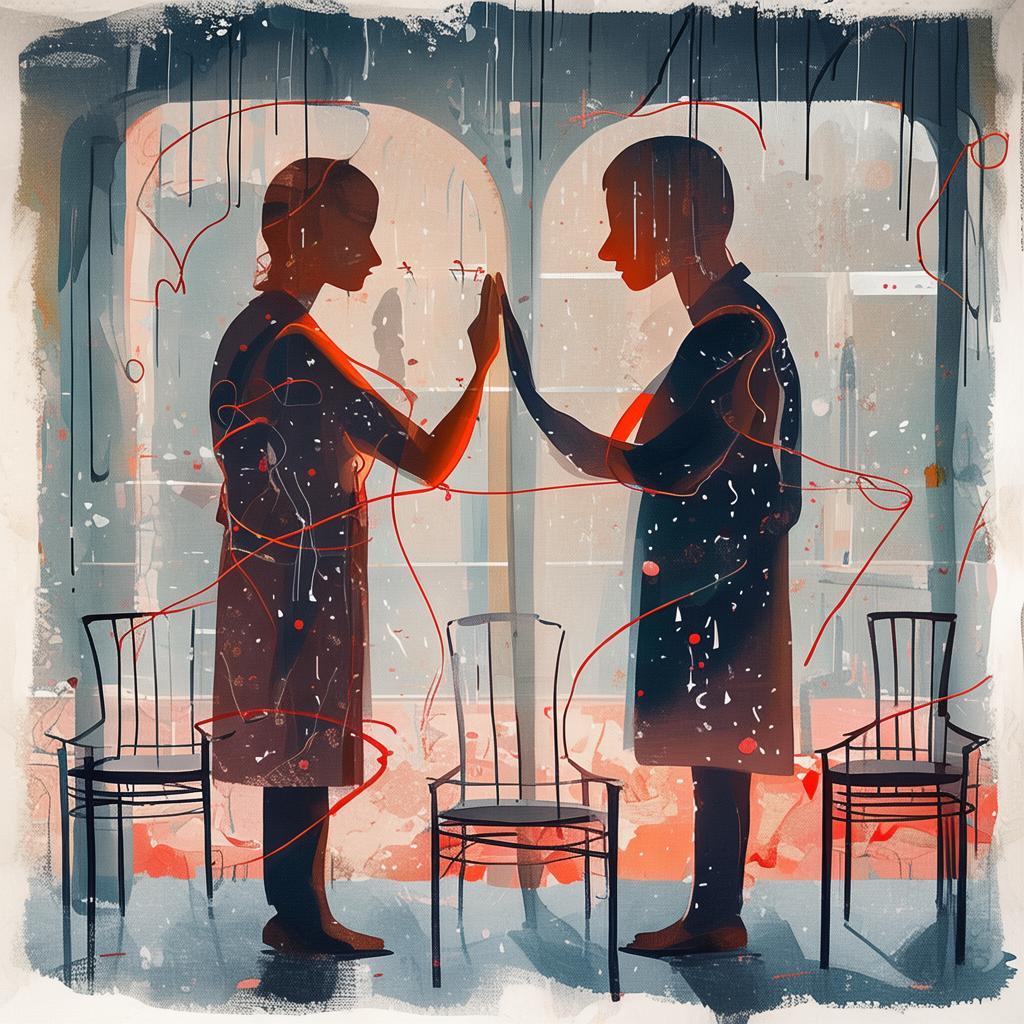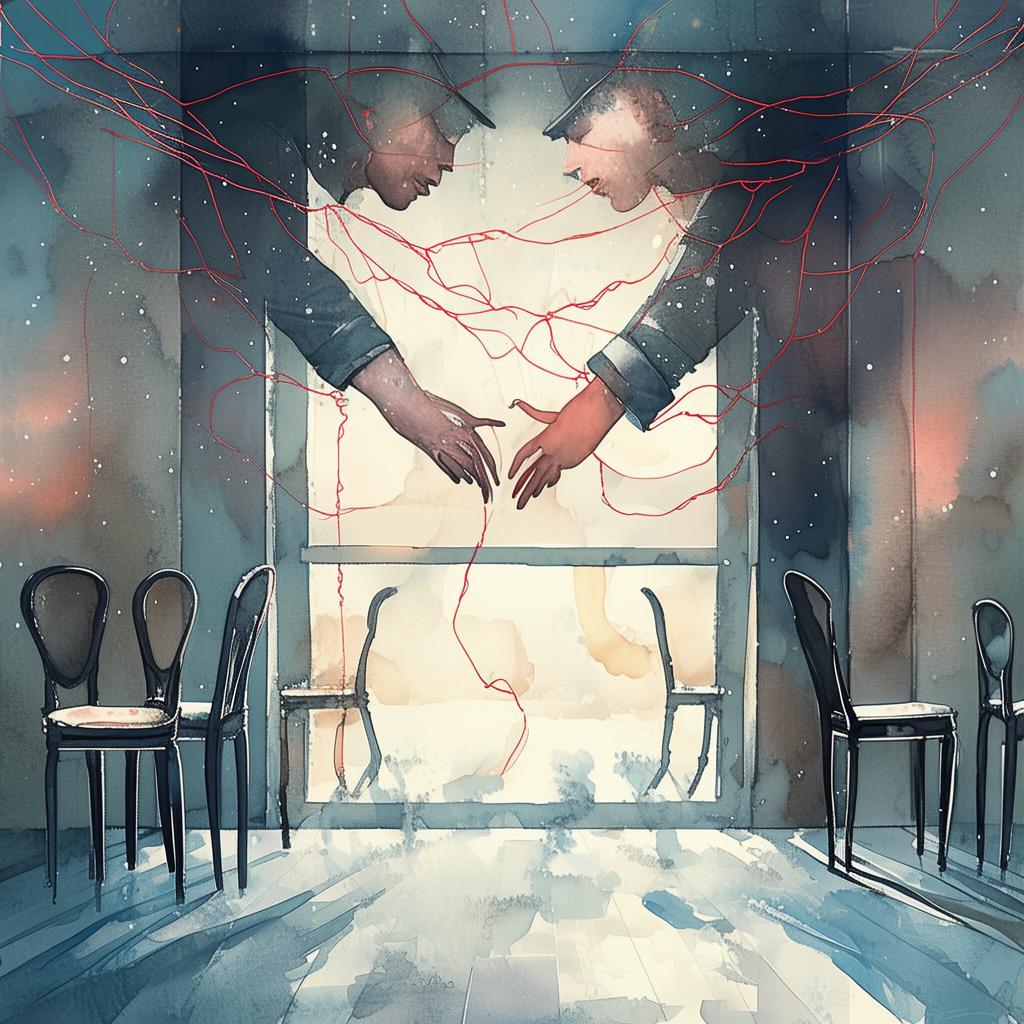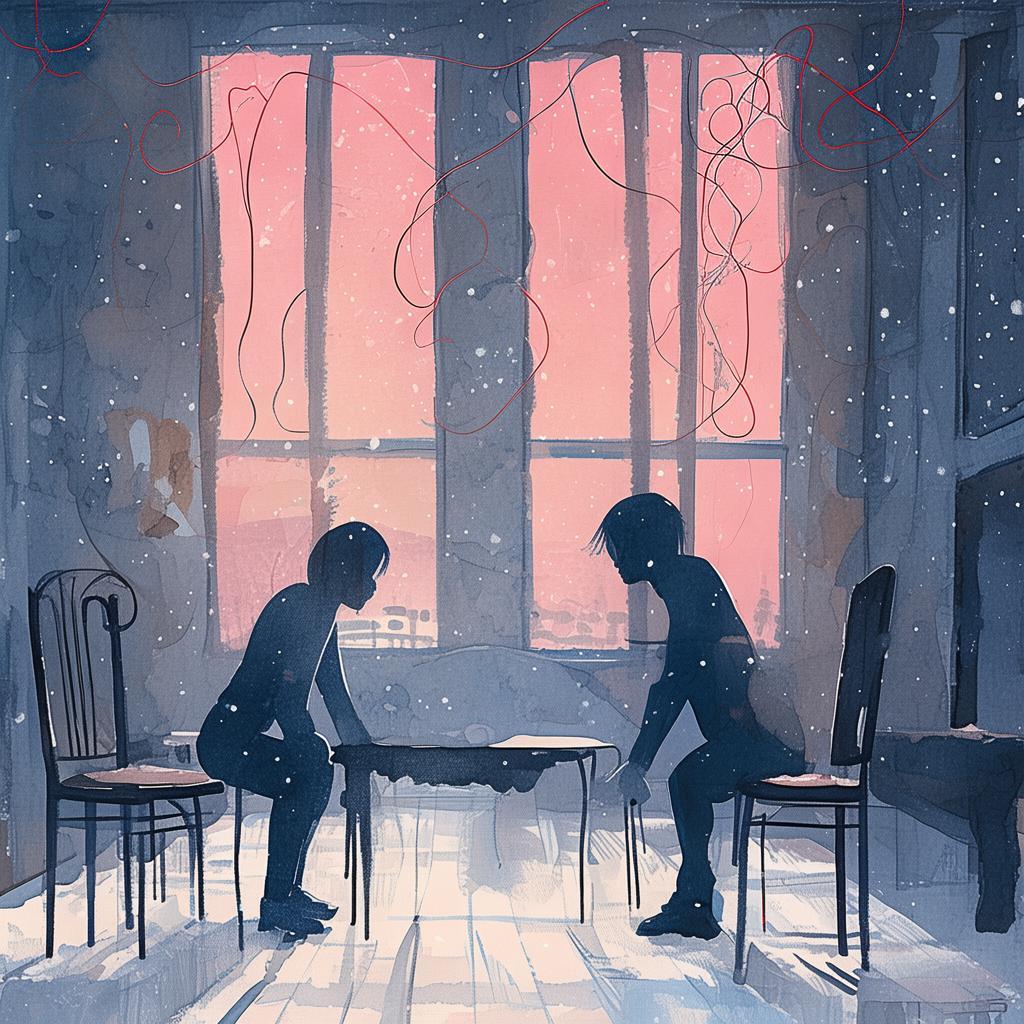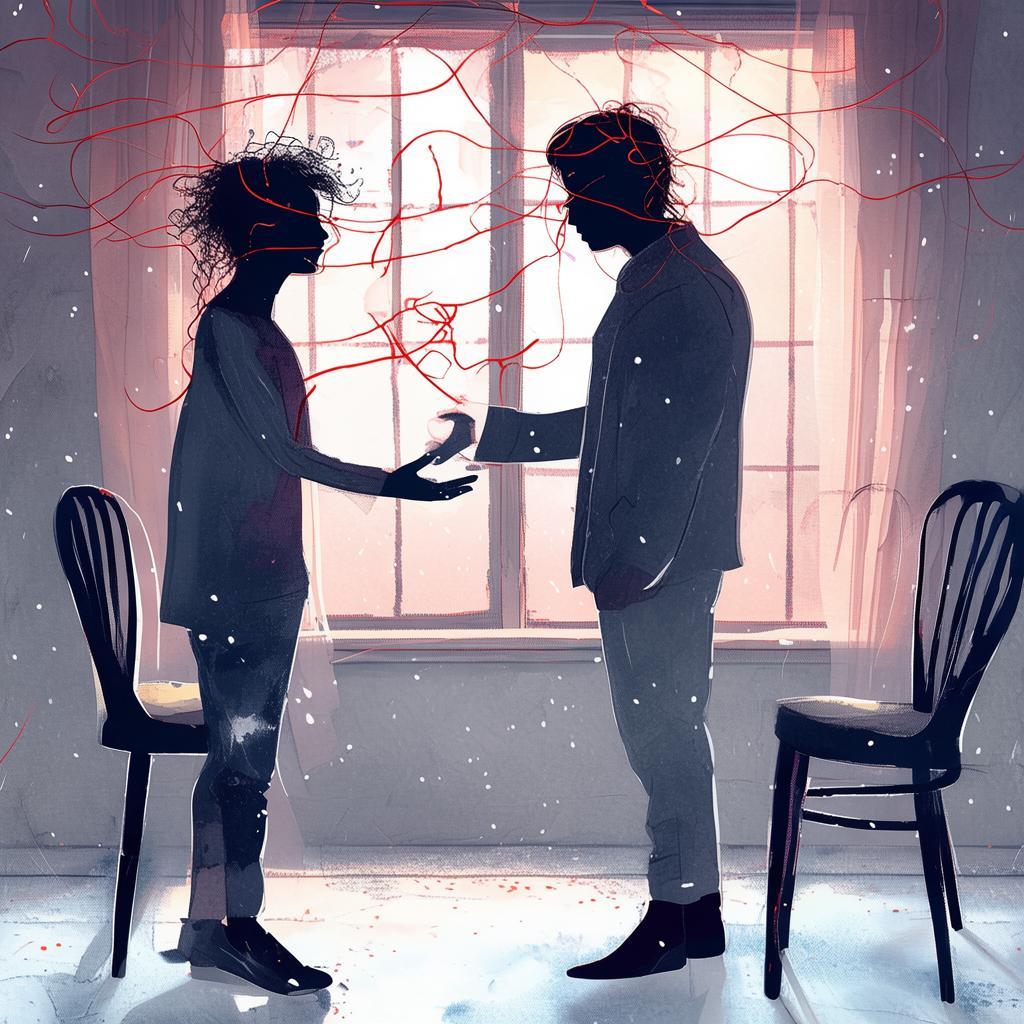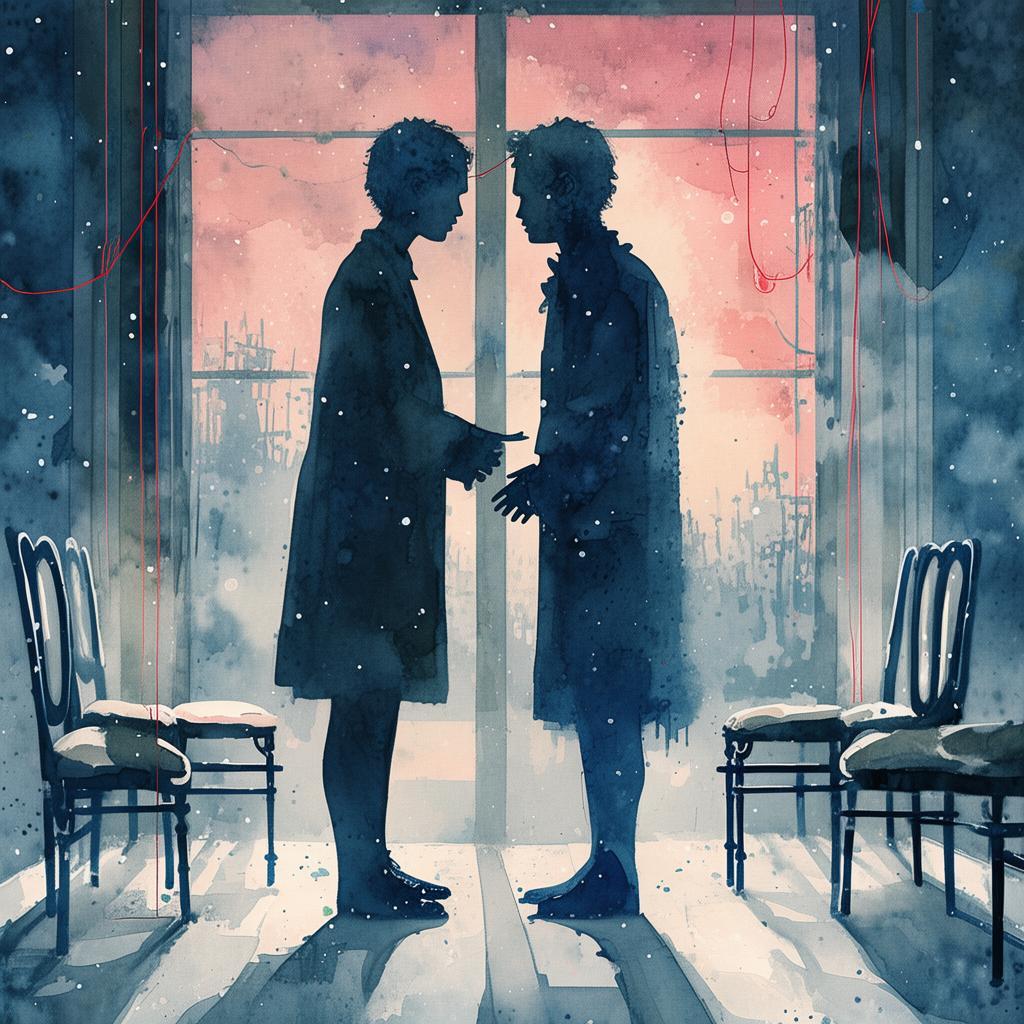The Veil of Deceit: A Glimpse of Betrayal
The grand hall of the museum was bathed in the soft glow of the chandeliers, casting dancing shadows on the marble floor. The air was thick with anticipation, the scent of polished wood and the faint hint of a rare, expensive oil painting. It was here, amidst the hushed whispers of art enthusiasts, that the most prestigious exhibition of the year was opening.
Among the throngs of guests, two figures stood apart. One, a young and charismatic curator named Chen Liang, was known for his impeccable taste and unyielding dedication to art. The other, a reclusive art forger named Luo Wei, was a shadowy figure whose work was spoken of in hushed tones, both admired and feared for its perfection.
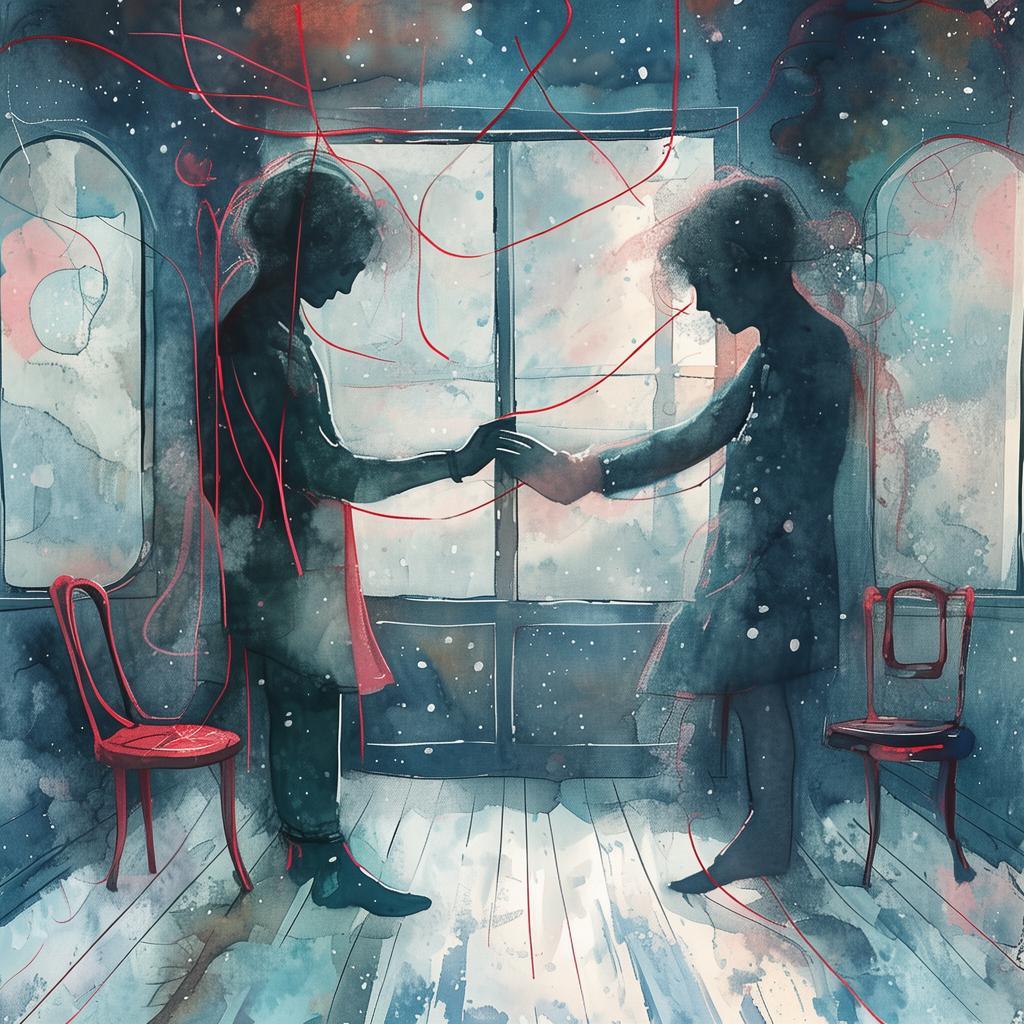
Chen Liang's eyes were drawn to the centerpiece of the exhibition—a painting that was rumored to be the work of a long-lost master, a masterpiece that had vanished from the public eye for decades. The painting was titled "The Veil of Betrayal," and it was a piece that could either make or break his career.
As the lights dimmed and the crowd gasped in awe, Chen Liang approached the painting. His fingers traced the delicate brushstrokes, the way the artist had captured the tension between love and betrayal. It was then that he felt a strange connection to the painting, as if it were calling to him.
In the shadows, Luo Wei watched Chen Liang's interaction with the painting. There was a flicker of something in his eyes, a hint of curiosity that was as unexpected as it was unsettling. Luo Wei had been hired to ensure the authenticity of the painting, but the more he looked at Chen Liang, the more he felt a sense of unease.
Days turned into weeks, and the relationship between Chen Liang and Luo Wei began to blur the lines between professional and personal. Chen Liang, intrigued by Luo Wei's enigmatic nature, found himself drawn to the forger's quiet strength and unspoken vulnerabilities. Luo Wei, on the other hand, found himself drawn to Chen Liang's passion and unwavering dedication to the art he loved.
But as the exhibition progressed, whispers of scandal began to swirl around "The Veil of Betrayal." The painting's authenticity was questioned, and the museum's reputation was on the line. Chen Liang and Luo Wei found themselves at odds, not just as individuals, but as pawns in a game that was much larger than either of them had imagined.
As the investigation into the painting's origins deepened, Chen Liang and Luo Wei's lives became entangled in a web of deceit and danger. The forger's past caught up with him, revealing a history of betrayal that mirrored the themes of the painting itself. Chen Liang, in turn, discovered that his own life was not as straightforward as he had believed.
The climax of their story came when the truth about "The Veil of Betrayal" was finally revealed. It was a revelation that would change everything, from the painting's place in art history to the very essence of Chen Liang and Luo Wei's relationship.
In the end, "The Veil of Betrayal" was not just a painting; it was a mirror, reflecting the complexities of human nature and the delicate balance between love and betrayal. Chen Liang and Luo Wei, both bound by the painting and their shared secrets, had to decide whether to trust each other or succumb to the shadows that threatened to consume them.
The exhibition closed with a storm of controversy, but the museum remained standing, its reputation intact. Chen Liang and Luo Wei, too, emerged from the chaos, their relationship forever altered by the experience.
In the quiet of the museum's storeroom, as the last of the visitors left, Chen Liang turned to Luo Wei and said, "I never thought I'd find someone like you, someone who could bring out the darkness in me and still love me for it."
Luo Wei smiled, a rare expression that seemed to light up the room. "And I never thought I'd find someone who could embrace the darkness and still see the light."
And so, amidst the world of art forgery and mystery, two men found a love that transcended the boundaries of truth and deception.
✨ Original Statement ✨
All articles published on this website (including but not limited to text, images, videos, and other content) are original or authorized for reposting and are protected by relevant laws. Without the explicit written permission of this website, no individual or organization may copy, modify, repost, or use the content for commercial purposes.
If you need to quote or cooperate, please contact this site for authorization. We reserve the right to pursue legal responsibility for any unauthorized use.
Hereby declared.

